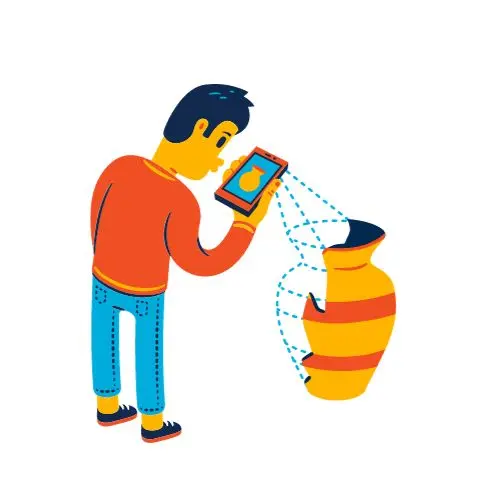Introduction
Expectations and reality often diverge, leaving people disappointed and disillusioned. Unmet expectations can negatively impact relationships, career success, and life satisfaction. This article explores techniques for aligning expectations with probable realities in major life domains.
Key Differences Between Expectations and Reality
| Expectations | Reality |
|---|---|
| Based on optimism, ideals, assumptions | Shaped by real-world limitations |
| Envision the best-case scenario | Reflect the most likely scenario |
| Lack of context and pragmatism | Constrained by trade-offs and external factors |
| Overestimate one’s abilities | Based on one’s demonstrated abilities |
| Underestimate obstacles | Obstacles often crop up |
| Black-and-white thinking | Shades of gray |
How Expectations Affect Wellbeing

When reality falls short of expectations, common consequences include:
- Disappointment, frustration, resentment
- Reduced self-esteem and sense of competence
- Strained relationships due to misplaced blame
- Anxiety or depression
- Loss of motivation from perpetual letdowns
Unrealistic expectations set us up for failure and prevent us from making the most of reality. Aligned expectations, on the other hand, prepare us to capitalize on opportunities.
Aligning Expectations in Different Life Domains
Aligning expectations requires an accurate appraisal of external conditions and internal capabilities. Key areas to cultivate realistic expectations include:
Personal Abilities
Assessing abilities objectively, without ego or false modesty, allows for setting growth-oriented goals.
Techniques:
- Take skills/ability assessments
- Review past performances to identify strengths and weaknesses
- Get candid feedback from others
- Recognize natural aptitudes and limitations
Career Advancement
Career ladder climbing often entails lateral moves, skill building, and compromise.
Techniques:
- Learn about typical career timelines in your industry
- Focus on acquiring skills needed for the next step
- Be willing to take detours on the path
- Seek mentorship from experienced professionals
Relationships
Balancing ideals with imperfect human needs helps relationships exceed “good enough” expectations.
Techniques:
- Discuss mutual relationship expectations frequently.
- Focus on whether core needs are met.
- Allow room for growth and mistakes.
- Compromise when expectations conflict
Personal Habits
Change comes through small, incremental improvements sustained over time.
Techniques:
- Break desired habits into the smallest action steps.
- Implement one step at a time
- Expect occasional backsliding
- Celebrate small successes
Finances
Budgets based on true expenses and income avoid shortfalls.
Techniques:
- Track spending to inform savings goals
- Build emergency funds for surprise expenses
- Automate savings contributions
- Review insurance deductibles and coverage gaps
Physical Appearance
Accepting natural looks reduces fixation on impossible beauty standards.
Techniques:
- Assess which aspects are within control
- Focus on health and self-care rather than comparison
- Manage social media consumption
- Challenge narrow beauty ideals
Life in General
Viewing life’s ups and downs as normal improves coping and resilience.
Techniques:
- Study biographies and history to understand common life patterns
- Collect positive role models who overcame adversity
- Maintain a gratitude journal during setbacks.
- Seek progress rather than perfection
The Benefits of Aligning Expectations
Calibrating expectations is empowering because it:
- Focuses efforts on what’s controllable
- Provides an accurate game plan and gauges realistic timelines
- Reduces frustration from inevitable hurdles
- Ensures efforts match abilities and circumstances
- Allows appreciating victories that do happen
- Maximizes satisfaction and well-being despite imperfect conditions
Rather than stagnating in disappointment over life’s intractable realities, aligning expectations propels us to make the most of them. We can calibrate expectations across all facets with discipline and practice, from the deeply personal to the widely shared. The payoff is enjoying successes once invisible behind the veil of unrealistic expectations.
Still Hopeful, But Ready for Reality

Aligning expectations with reality does not mean abandoning hopes and dreams. High hopes can flourish alongside grounded expectations. The key is distinguishing hopes and dreams from expectations.
Hopes and dreams represent the life we aspire to, full of rich meaning and contribution. They include big and small wishes – from impacting the world to learning a new skill.
Expectations should represent the outcomes we can reasonably count on based on current circumstances and abilities. Expectations are the stepping stones toward hopes and dreams.
By differentiating the two, we can protect our hopes while equipping ourselves with reality. When hopes and expectations blur together, it sets up disappointment. But when held separately, it hopes to energize us to take on reality tests.
Conclusion
Left unchecked, expectations often snowball beyond reality’s reach, regularly disappointing us. But with diligent calibration, we can align expectations with probable realities. This focuses efforts on the controllable while allowing appreciation of life’s gifts. With aligned expectations, we are neither blinded by unfounded optimism nor resigned to limiting despair. We retain high hopes for the future while grounded enough to make the most of the present.

